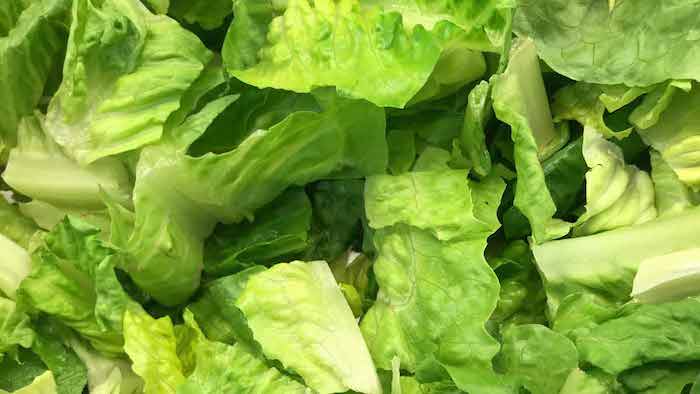Ground beef used to be the top source of E. coli illnesses in the U.S., but a new report shows leafy greens are now the leading cause of these illnesses. Up until recently, leafy greens were second to ground beef.

Who Did This Research?
The report, entitled Foodborne illness source attribution estimates for 2020 for Salmonella, Escherichia coli O157, and Listeria monocytogenes using multi-year outbreak surveillance data, United States, was released on November 4, 2022, by the Interagency Food Safety Analytics Collaboration (IFSAC).
IFSAC is a group comprised of the three federal agencies responsible for food safety in the U.S. – the Centers for Disease Control and Prevention (CDC), the U.S. Food and Drug Administration (FDA), and the U.S. Department of Agriculture’s Food Safety and Inspection Service (USDA-FSIS). In 2012, IFSAC developed a method to estimate the percentages of foodborne illness attributed to certain sources using outbreak data from 1998 through the most recent year for pathogens that cause the most serious foodborne illnesses: Salmonella, Escherichia coli O157, Listeria monocytogenes, and Campylobacter. The estimation method gives equal weight to each of the most recent five years of data (2016 – 2020), and exponentially less weight to each earlier year (1998 – 2015).
Did you get E. coli from leafy greens?
Leafy Greens and E. coli
Row crops/leafy greens and beef have been the top two food sources of E. coli illnesses every year since IFSAC’s first report in 2012. Together they have accounted for 73-81 percent of E. coli illnesses reported annually. Dairy products have consistently occupied the third spot.
Since 2013, the percentage of illnesses attributed to row crops/leafy greens has been higher than the percentage of E. coli illnesses attributed to ground beef. However, because these percentages were calculated with a 90 percent “credibility interval” there was no statistically significant difference between the (row crops, beef percentages) reported from 2013- 2016.
- 2013 (42.1, 37.9)
- 2014 (44.2, 34.9)
- 2015 (44.9, 33.0)
- 2016 (43.2, 29.9)
But since 2017, the gap between the two grew enough that the percentage of E. coli illnesses attributed to row crops has been significantly higher than any other food source. In 2020, the percentage for row crops/leafy greens was the highest ever.
- 2017 (47.7, 26.6)
- 2018 (50.3, 25.5)
- 2019 (55.9, 23.4)
- 2020 (58.1, 22.8)
Those percentages likely won’t come as much of a surprise to U.S. consumers who have seen outbreak after outbreak attributed to romaine lettuce and other leafy greens in recent years. Between 2009 and 2018, 40 E. coli outbreaks were linked to leafy greens, according to the Centers fo Disease Control and Prevention (CDC). Romaine lettuce was the source of more than half of those outbreaks.
Recently, an E. coli outbreak linked to romaine lettuce served on Wendy’s hamburgers and sandwiches sickened 109 people. And the FDA is currently investigating an E. coli outbreak that has sickened at least 11 people.
Experienced E. coli Lawyers
The E. coli lawyers at Pritzker Hageman have represented clients in every major E. coli outbreak in the U.S. If you would like to request a free consultation with our experienced E. coli Team, please call us at 1-888-377-8900, text us at 612-261-0856 or, fill out the form below.